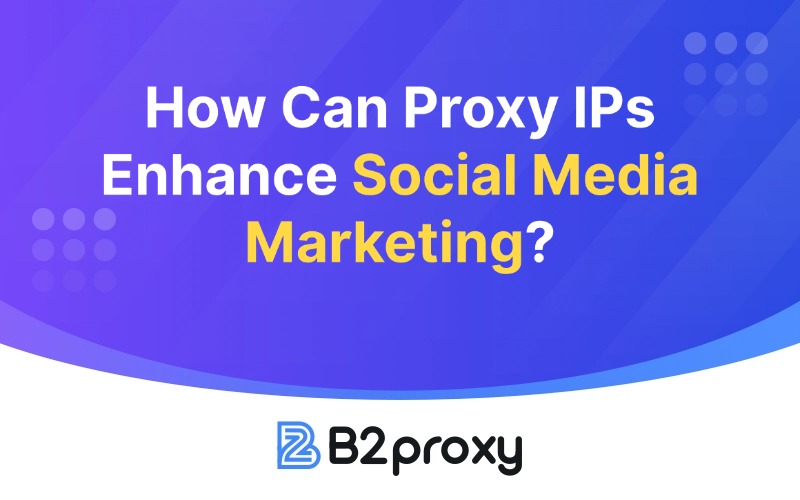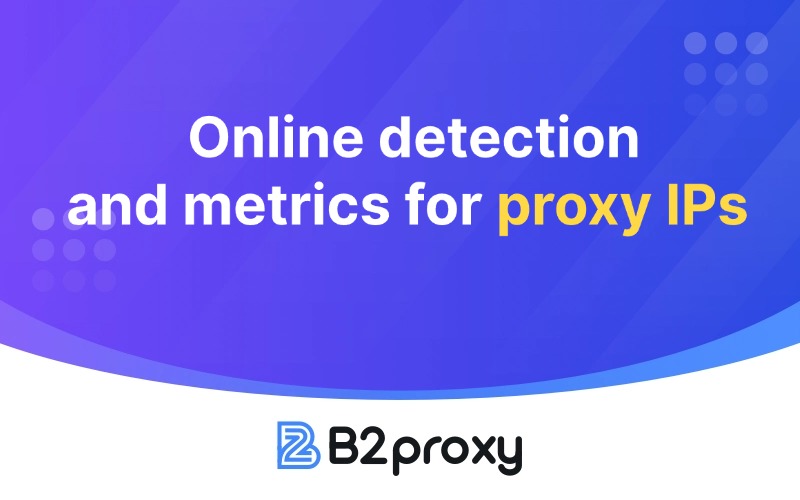Proxy IP Anti-Pitfall Guide: Common Misconceptions and Selection Advice
 July 14.2025
July 14.2025

<p style="line-height: 2em;"><span style="font-family: Calibri; font-size: 16px;">With the increasing complexity of data collection, advertising, cross-border e-commerce and account management scenarios, proxy IP has gradually become an important technical means for enterprises and developers to carry out online business. However, due to the mixed market of proxies and different service standards, many users frequently “step on the pits” in the process of purchasing and using proxy IPs, resulting in frequent problems such as access anomalies, account blocking and data invalidation. In order to help users effectively avoid these risks, this article will start from the typical misunderstandings, combing proxy IP in the practical application of the considerations, and put forward targeted recommendations in order to achieve a more secure, efficient and controllable proxy experience.</span></p><p style="line-height: 2em;"><span style="font-family: Calibri; font-size: 16px;">Neglecting Quality and Being Price-Oriented Only </span></p><p style="line-height: 2em;"><span style="font-family: Calibri; font-size: 16px;">In the procurement process of proxy IP, many users tend to focus on price first, hoping to obtain the most resources at the lowest cost. However, price does not represent service quality. Low-priced proxies usually mean high IP duplication rate, poor anonymity, lack of stability, or even the use of illegally crawled or spliced IP resources, resulting in a very low connection success rate. In practical applications, these IPs may have been blocked by the target site before access, resulting in tasks that cannot be executed at all, further causing business delays and resource wastage. Therefore, when choosing a proxy IP, users should comprehensively evaluate the service provider's IP legitimacy, anonymity level, rotation mechanism, connection stability, and service support capabilities, rather than making decisions based on price alone. Taking B2Proxy as an example, it supports city-level localization and dynamic rotation, and can meet the needs of complex applications such as high concurrency and anti-detection, which is an important guarantee for the stable operation of many enterprises.</span></p><p style="line-height: 2em;"><span style="font-family: Calibri; font-size: 16px;">Ignoring the adaptation of proxy types and business requirements </span></p><p style="line-height: 2em;"><span style="font-family: Calibri; font-size: 16px;">In practical applications, different types of proxy IPs are suitable for different business objectives. If you blindly choose a proxy type without specifying the usage scenario, it will often lead to operational failure or even trigger platform wind control. For example, Residential proxies are more suitable for social platform login and content interaction, while data center proxies are suitable for large-scale, high-frequency data capture tasks. Mixing types or using them improperly will seriously reduce the access success rate and even pose a risk of account blocking. In addition, transparent proxies are usually not suitable for operations that require high anonymity, such as ad verification or cross-border transaction testing, because they expose real IPs. Therefore, before choosing a proxy, users should first clarify the factors such as the industry they are in, the anti-crawling strength of the target site, and the access frequency requirements, and then match the type of proxy in a targeted manner to ensure the covertness and stability of network behavior.</span></p><p style="line-height: 2em;"><span style="font-family: Calibri; font-size: 16px;">Improper use of configuration, affecting the performance of the proxy </span></p><p style="line-height: 2em;"><span style="font-family: Calibri; font-size: 16px;">In addition to the type and quality of the proxy, the details of the use of configuration is also one of the important factors affecting the effectiveness of the proxy. Many users ignore key parameters such as request frequency, request header settings, and IP usage cycle control after proxy IP access, resulting in the proxy being recognized as an abnormal request source by the target site. For example, continuous use of the same IP to perform high-volume requests, or multiple accounts sharing the same IP outlet, will be recognized as automated behavior and banned. In addition, issues such as unreasonable timeout settings, DNS leaks, and failure to emulate browser behavior can further reduce proxy stealth and affect task completion rates. Therefore, it is recommended that users use proxy IPs with reasonable rotation cycles, request intervals and header parameters, and adopt service platforms with access policy control and log feedback according to business needs, so as to ensure the availability and business continuity of proxies.</span></p><p style="line-height: 2em;"><span style="font-family: Calibri; font-size: 16px;">Being misled by “pseudo-exclusive IP” increases the risk of blocking </span></p><p style="line-height: 2em;"><span style="font-family: Calibri; font-size: 16px;">There is also a common phenomenon in the current market, that is, some service providers packaged shared IP as “exclusive resources”, and users actually share the same IP resources with others in the process of using, which seriously affects the security and business stability of use. security and business stability. The use of such “pseudo-exclusive” IP is extremely risky, not only the access behavior is uncontrollable, but also the abnormal operation of other users may be blocked, resulting in mission failure. In order to ensure the stable operation of critical services, it is recommended that enterprise users give priority to choosing service solutions that support exclusive IP pools, access authorization binding and auditable access records to ensure that every IP resource is invoked in an exclusive and secure environment.</span></p><p style="line-height: 2em;"><span style="font-family: Calibri; font-size: 16px;">DNS Leakage Unguarded, Anonymity in Void </span></p><p style="line-height: 2em;"><span style="font-family: Calibri; font-size: 16px;">It is worth noting that some users are still at risk of real IP leakage even if they have configured proxy IPs. The reason for this is that DNS requests are not proxied, resulting in DNS queries still being completed through the local channel, which can be used by the target website to obtain the user's real location or operator information through backtracking. This is especially common during browser testing and script development. To avoid such problems, users should enable global proxy policy or DNS over HTTPS (DoH) when configuring proxies, and ensure that the proxy platform used supports intelligent DNS resolution or related encryption protocols to further enhance access privacy.</span></p><p style="line-height: 2em;"><span style="font-family: Calibri; font-size: 16px;">As a core tool for improving network access efficiency and privacy protection, proxy IP can only realize its true value under the premise of scientific selection and standardized use. Enterprises and developers should avoid blindly pursuing low prices or short-term results in actual deployment, and instead focus on core elements such as IP quality, service capability, configuration flexibility and long-term controllability. By choosing a platform with high-quality IP resources, intelligent routing capabilities and enterprise-class service guarantees like <a href="https://www.b2proxy.com/" target="_self">B2Proxy</a>, users can carry out sensitive business operations in a volatile network environment with greater peace of mind, improve the efficiency of data access, safeguard account security, and help globalized businesses to land smoothly.</span></p><p><br/></p>
You might also enjoy

How Can Proxy IPs Enhance Social Media Marketing?
Learn how proxy IPs boost social media marketing with secure multi-account management, ad testing, and cross-region data collection using B2Proxy.
November 27.2025
Essential for cross-border business: Online detection and metrics for proxy IPs
Learn how to test proxy IPs for speed, anonymity, and reliability to ensure stable cross-border business, social media, and data operations.
November 27.2025
Why Retailers Must Use Residential Proxies: The Core Competency of Modern Price Monitoring
Learn how residential proxies improve price monitoring accuracy, reduce blocking, support MAP compliance, and power modern retail competitive intelligence.
November 26.2025







